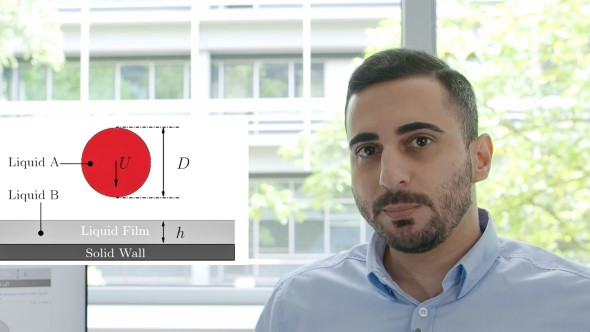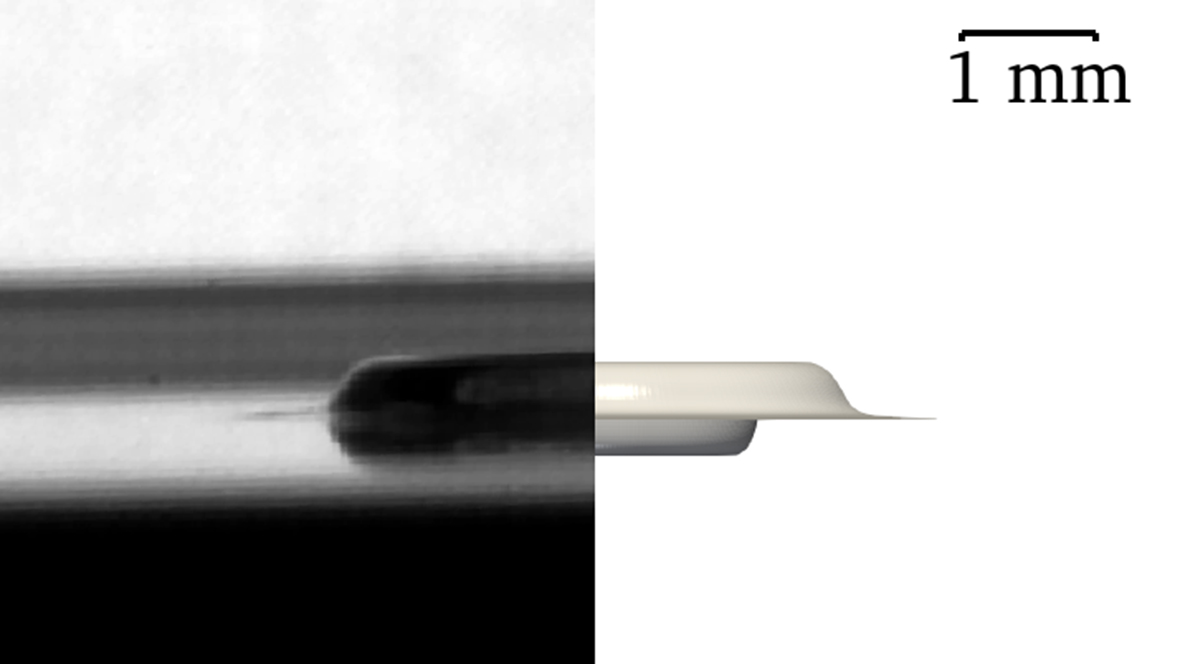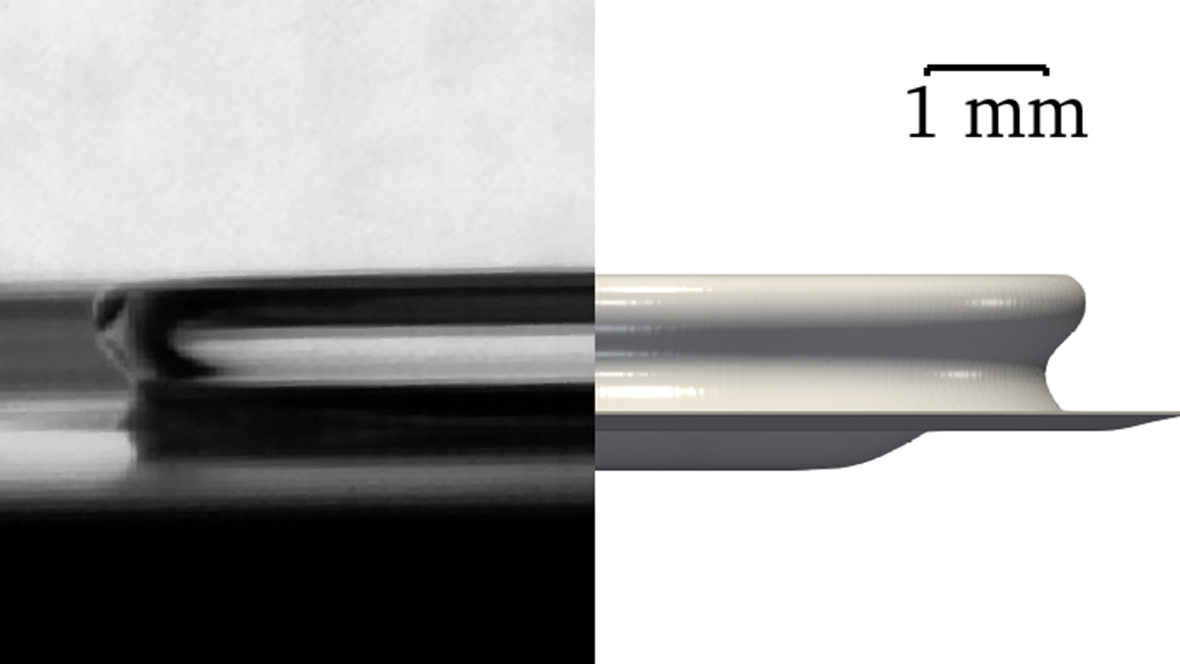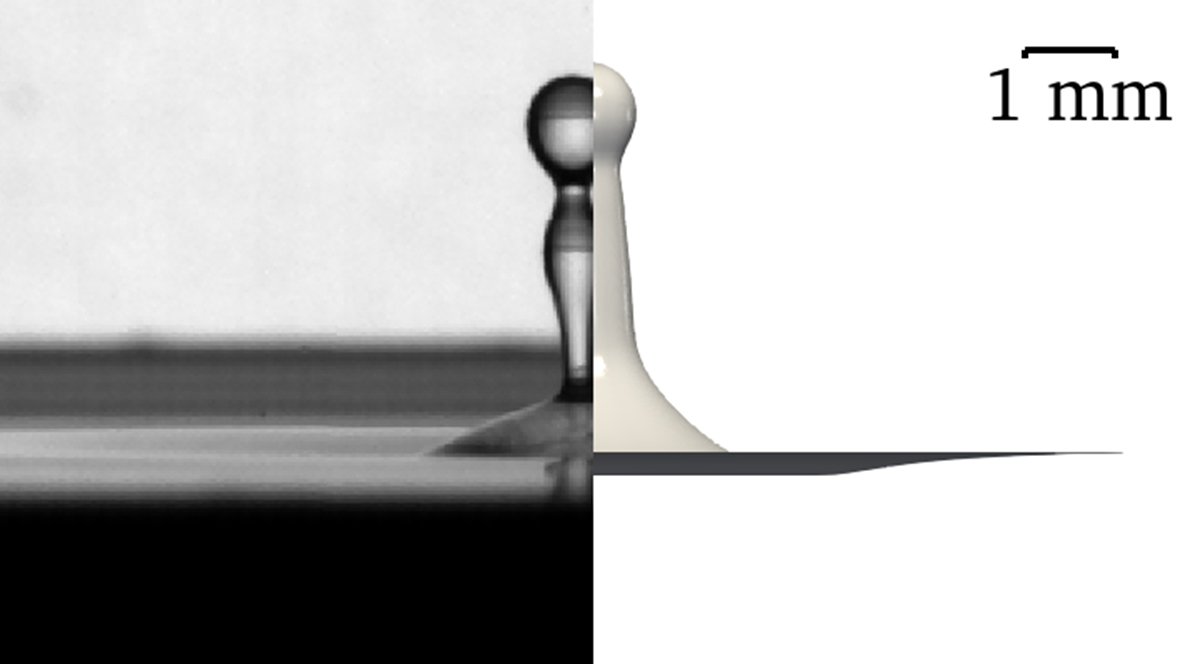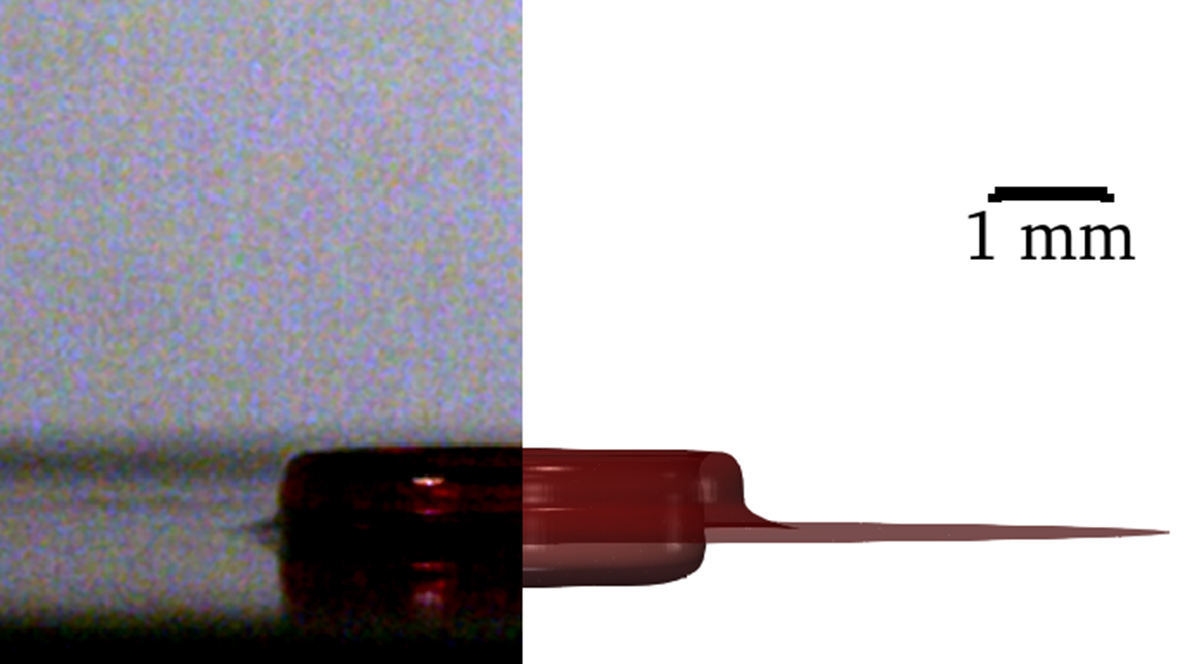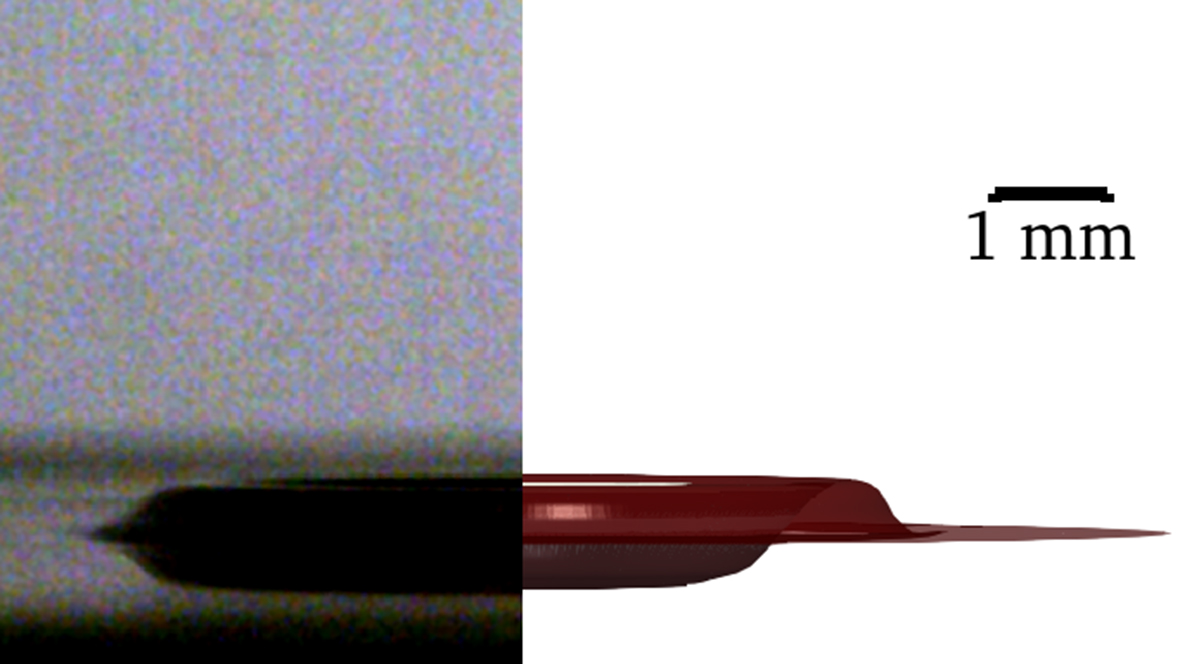Team
| Name | Contact | |
|---|---|---|

| Dr.-Ing. Holger Marschall | marschall@mma.tu-... +49 6151 16-21465 L2|06 411 |

| Dr. Dipl.-Ing. Martin Wörner | martin.woerner@kit.edu +49 721 608-47426 |
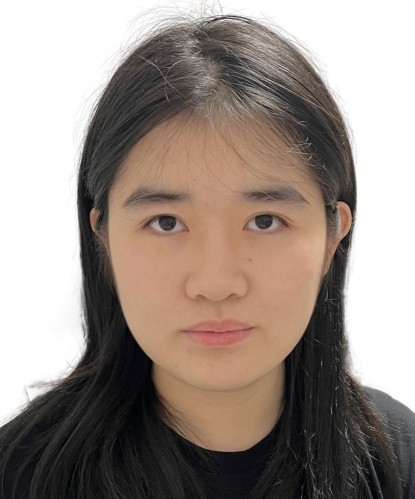
| Xiaoyu Wang M.Sc. | wang.x@sla.tu-... +49 6151 16-22205 L2|06 415 |
Motivation
In systems for exhaust gas aftertreatment and in internal combustions engines, sprays interact with liquid wall films. The impact of fuel drops, for instance, may release oil from the lubricating wall film into the combustion region causing pre-ignition. In emission control with urea-water solution (UWS), drops and wall film have different concentrations depending on process conditions. Depending on velocity and size of the droplets and on the thickness of the wall film, splashing might occur so that secondary droplets form. The interaction of the drop and a thin liquid wall film is extensively studied both experimentally and numerically for identical liquids. On the other hand, experiments to understand the underlying physics of the drop impact process onto a thin liquid wall film for non-identical liquids are limited and majority of the experimental works focus on the effect of miscibility. Moreover, very few numerical investigations are performed for both miscible and immiscible systems. Since the underlying phenomena and interdependencies are not yet fully understood, fundamental research on the drop-film interaction of miscible fluids is considered highly relevant to increase process efficiency while reducing emissions.
Objectives
The aim of this sub-project is to better understand the interaction between an impacting droplet and a thin liquid wall film in above applications under real conditions using direct numerical simulations (DNS). The central research questions are as follows:
1. How does the miscibility of droplet and wall film affect the drop impact and splashing process?
2. How does the regime limit for splashing shift depending on drop kinetic energy, wall film thickness and composition of droplet and wall film?
3. What is the composition and size distribution of secondary drops for different conditions?
The development, implementation and application of a numerical method based on the diffuse-interface approach is key to achieve this objective, enabling accurate, robust and efficient simulations of droplet-wall interaction in prototypical cases. The local data from DNS shall then be exploited to develop correlations and regime maps for modeling the drop-film interaction in scale-reduced CFD methods as used for engineering design.
Approach
We have further developed and implemented a phase field method, based on a class-I diffuse-interface model. In this approach, the interface is treated as a thin transition layer of finite and prescribed width across which physical properties vary rapidly but continuously (diffuse interface concept). In this method the evolution of the interfaces is governed by the Cahn-Hilliard equation which are coupled with the Navier-Stokes equations. The coupled system of Cahn-Hilliard Navier-Stokes equations are implemented and solved using OpenFOAM (FOAM-extend 4.0/4.1) as a model library used by a top-level solver referred to as phaseFieldFoam. The structure of this library is physics-guided and extendible, following an object-oriented programming paradigm.
Previous findings
Highlight of previous findings can be summarized as follows:
- A phase field method for multi-component multi-phase systems has been implemented in OpenFOAM that is mass/phase-volume preserving and thermodynamically consistent, as well as preserving reduction and symmetry properties. The code structure can be flexibly expanded through a physics-based, object-oriented design, which we consider groundbreaking.
- The volume conservation of the phase field method can be significantly improved by a chemical potential that is known from the literature but has not yet been used in practical simulation calculations (Dadvand et al., Phys. Fluids 2021)
- In rotationally symmetrical simulations, the impact of individual HWL droplets on dry substrates was investigated for droplet sizes and impact speeds that are relevant in technical SCR systems. Substrate wettability has a major effect on droplet dynamics, with hydrophobic conditions counteracting the formation of a wall film (Wörner et al., Appl. Math. Mod. 2021).
- In cooperation of B08 (parameter definition) and A02 (experiments), a benchmark data set on the dynamics of rotationally symmetric droplet-wall film interactions was created. Using this data set it was shown that the consideration of non-equilibrium effects when modeling the interfacial tension is essential in the phase field method for very dynamic processes (Bagheri et al. IJHFF 2022). Therefore, a new out-of-equilibrium model was derived and deployed that successfully predicts interface dynamics for low, moderate, and high energy impact cases, see figure below and the video (opens in new tab) on YouTube. Furthermore, the mobility which is a model parameter in diffuse-interface method was given a new formulation based on the transport properties of the fluids which eliminates the need for calibration of this model parameter.
Current work
Previously, our numerical framework was capable of simulating two phases in the computational domain and this two-phase version of the code is now deprecated. Recently, we have extended and considerably enhanced our numerical framework to be capable of simulating N generic immiscible and incompressible phases (of individual rheology) honoring reduction and thermodynamic consistency. The implementation follows a rigorous object-oriented and physics-guided development paradigm. The N-phase diffuse-interface model library is validated against variety of different literature-known numerical tests and benchmarks (Bagheri et al., CJCE 2022, accepted). For instance, in an N=3 phase scenario the model library is validated against the floating liquid lens [YouTube video (opens in new tab)] and the bubble rise in two stratified layers [YouTube video (opens in new tab)] problems. Moreover, we have also validated the methodology against a three-phase drop impact onto think liquid film problem qualitatively with the experimental data provided from sub-project A02, see figure below [YouTube video (opens in new tab)]. In an N=4 phase scenario the potential of the method is demonstrated for a planar test case from literature [YouTube video (opens in new tab)].
Currently, we are working on extension of our methodology to incorporate miscible system of fluids. We are also working on utilization of Dynamic Load Balancing (DLB) and Adaptive Mesh Refinement (AMR) techniques in the brand-new N-phase numerical framework.
Cooperations
For validation of the numerical simulations and to establish fundamental understanding, coordinated and complementary experimental studies are carried out in the Collaborative Research Centre/Transregio 150: The close interplay between experimental and numerical projects aims to understand the drop wall-film interaction with miscible two-component systems under ambient conditions (A02, A07), in the cylinder (C02) and in the exhaust gas system (C04), and to develop a parametric model for the composition and mass of secondary droplets for integration into the holistic model (C05).

